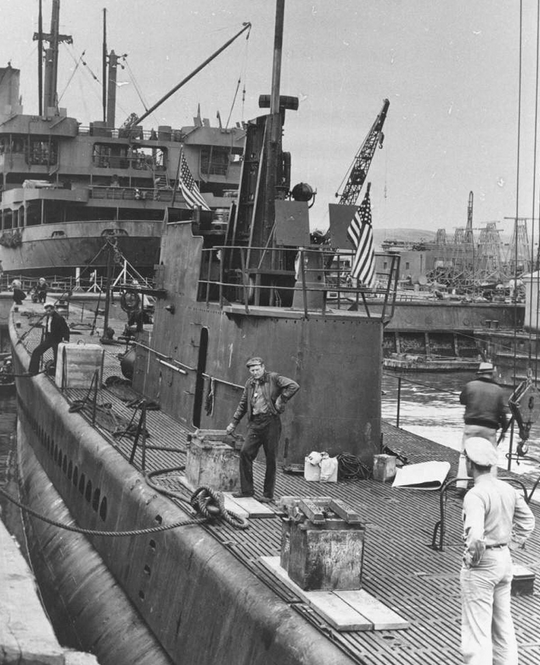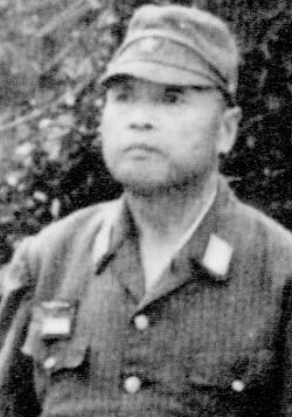
The Sinking of the Montevideo Maru
Were you to survey Australians with a simple question: ‘What is Australia’s greatest maritime disaster’, our guess is that most could not answer at all. A few might hazard that the loss of 645 sailors on HMAS Australia[i] on 19th February 1941 off Carnarvon, WA, would qualify. The only other candidate some might mention is the sinking of the hospital ship AHS Centaur[ii], torpedoed off the Queensland coast on May 14, 1943, with the loss of 268 medical staff and civilian crew members from the 332 people on board. It is unlikely that anyone, until the news reports of the past few days, would nominate the sinking of the MV Montevideo Maru despite its far greater loss of 1,053 soldiers and civilians.
Some six months into Australia’s participation in the Pacific War, the Japanese ship, the Montevideo Maru was transporting more  than 1,000 PoW’s and civilians from Rabaul to Hainan Island in China. She was alone when spotted on July 1, 1942, by the submarine USN Sturgeon (right), which slammed two torpedoes into her. Unlike so many of the defective torpedoes that cursed US operations in the early days of the Pacific campaign, these exploded. She sank in just 11-minutes, taking every passenger and 20 Japanese sailors to the seabed 4,000 metres below. Now the wreck has been discovered 81 years after the sinking.
than 1,000 PoW’s and civilians from Rabaul to Hainan Island in China. She was alone when spotted on July 1, 1942, by the submarine USN Sturgeon (right), which slammed two torpedoes into her. Unlike so many of the defective torpedoes that cursed US operations in the early days of the Pacific campaign, these exploded. She sank in just 11-minutes, taking every passenger and 20 Japanese sailors to the seabed 4,000 metres below. Now the wreck has been discovered 81 years after the sinking.
How did a tragic event of such magnitude occur, and why has it taken so long for it to be recognised?
The Fall of Rabaul
Capitalising on Australia’s flawed ‘tripwire’ defensive plan, Japanese forces swept through the South Pacific, overrunning Malaysia, Singapore, the Dutch East Indies and the three Australian battalions deployed to Timor, Ambon and Rabaul[iii].
Rabaul was then the capital of the Mandated Territory of New Guinea administered by Australia. The Australian government had been scrupulous in observing the demands of the League of Nations by refraining from making any defence preparations whatever. Finally, on September 4, 1939, on the outbreak of war in Europe, the Australian Army issued an authority to form the New Guinea Volunteer Rifles (NGVR) as an unpaid militia force of about 500 expatriate residents from the provincial towns, but principally from Rabaul and the ‘mainland’ goldfield towns of Lae, Salamaua , Wau and Bulolo. About 100 residents formed a Company of NGVR in Rabaul.
The first Japanese bombs fell on Rabaul on January 4, 1942, killing 12 local people. On January 8 the last evacuation took place when MV Malaita left Rabaul after embarking all Japanese internees from the territory, plus the few remaining European women and children who had arrived too late to board previous departures.
On the January 20 the obsolete Australian Wirraway aircraft were shot from the sky by Japanese Zeroes and on the following day carrier-based dive-bombers destroyed the only two coastal guns. Fortunately, several strategically positioned coastwatchers provided early warning of their approach, thus saving the gunners. The stage was now ripe for the invasion.
The Japanese carrier planes and troops allocated to capture Rabaul were the same experienced forces that had attacked Pearl Harbour and taken Guam. The invasion forces, designated the South-Seas Detachment (Nankai-Shitai), had assembled and sailed from Guam for Rabaul on January 16, 1942. The Australian garrison in Rabaul, Lark Force, numbered about 1,400 men, centred on the 2/22nd Battalion, plus supporting units and a company of NGVR. An independent company of about 225 men with headquarters in Kavieng was a screening force spread throughout the Islands from Manus to New Caledonia.
When the invasion began on January 23, the Lark Force men held their positions, fought, and then withdrew to the jungle and mountains as the Japanese outflanked and pursued them. Japanese Commander Mitsuo Fuchida would later say, ‘If ever a sledgehammer has been used to crack an egg, this was the time.’ Lark Force had no withdrawal plan, so many stragglers were caught and massacred. About 400, however, managed to elude the Japanese and, after a harrowing march that tested their endurance, reached the south and north coasts of New Britain. Australians from the New Guinea mainland assembled a fleet of small boats, reached the scene and took them to safety.
Many captured Australian military and civilian internees were summarily murdered. On 3rd and 4th February 1942, 160 Australians were massacred at Tol and Waitavalo Plantations after surrendering. Other Australian civilians and soldiers surrendered in belief their families would be informed where they were. Over 1,100 spent five months in a prisoner camp in Rabaul working as forced labour on the wharves. On June 22 the officers were separated from the soldiers and civilians, with the latter being embarked on the MV Montevideo Maru in Rabaul, bound for Hainan Island, off the coast of China.
The Last Voyage
Early in the morning of July 1, 1942, after rounding the northern tip of the Philippines’ Luzon Island, the unmarked Montevideo Maru was torpedoed by the Sturgeon. The ship sank swiftly, and all 1,053 Australian soldiers and civilians drowned. A number of surviving Japanese seamen and marines reached Luzon but only a handful would make it to Manila, the others having been killed en route by Philippine guerrillas.
The remaining 80 officers and nurses at rabaul boarded the Naruto Maru, bound for Japan, two weeks later, where they arrived safely, remaining there until the war’s end.
The first Australians who arrived in Rabaul after the ceasefire early September 1945, discovered over 93,000 occupying Japanese but only 26 European prisoners, four of the original civilians, one Australian soldier, 16 British soldiers transported from Singapore, four US airman and one NZ airman.
 The Japanese forces in Rabaul, under General Hitoshi Imamura[iv], Commander in Chief of the Japanese Imperial South Eastern Army, formally surrendered to the Australian 1st Army under the command of Lieutenant General Sturdee on 6th September 1945. Imamura (left) was found guilty of war crimes in violation of the Geneva and Hague Convention. As wikipedia puts it,
The Japanese forces in Rabaul, under General Hitoshi Imamura[iv], Commander in Chief of the Japanese Imperial South Eastern Army, formally surrendered to the Australian 1st Army under the command of Lieutenant General Sturdee on 6th September 1945. Imamura (left) was found guilty of war crimes in violation of the Geneva and Hague Convention. As wikipedia puts it,
He was tried by an Australian military court at Rabaul on 1–16 May 1947, convicted and sentenced to imprisonment for ten years. Imamura served his imprisonment at Sugamo Prison in Tokyo until he was released in 1954. As he found that his imprisonment was too light with respect to his responsibility for the crimes of his subordinates, he had a replica of the prison built in his garden, and he stayed there until his death.
The Rabaul and Montevideo Maru tragedies have never received the public awareness and recognition they warrant. Over 17 percent of all Australians who died as prisoners and internees of the Japanese perished on the MV Montevideo Maru. Without knowing the fate of the Rabaul families and servicemen their relatives were left to wonder what had become of their men as the last letters had been received in early January 1942. It was not until October 1945, more than three years after the sinking, that the families discovered their fate.
Two reasons for the silence are possible, and neither reflects credit on those involved:
1/ There is some minimal evidence that US naval intelligence ntelligence knew the details of the journey of the MV Montevideo Maru but withheld it from the Sturgeon as they did not want the Japanese to suspect that their naval codes had been broken, and
2/ Because the greatest loss in Australian naval history was caused by ‘friendly fire’.
No formal investigation was ever conducted. In 2010 both houses of the Australian Parliament belatedly expressed regret for the loss. On 1st July 2012, on the 70th Anniversary of the sinking, a national Rabaul and Montevideo Maru Memorial was dedicated in the grounds of the Australian War Memorial, Canberra.
Sixty years after the sinking, the sole surviving Japanese sailor recalled how, amid the screams, he heard Australian prisoners trapped in the hold singing Auld Lang Syne as the ship went down. Today, as he honour our war dead, it is appropriate also to hail the indomitable Australian spirit of yesteryear which sustained them in the face of certain death.
Lest we forget.
[i] HMAS Sydney (D48) – Wikipedia The wreck of HMAS Sydney and its adversary, the Kormoran were found in 500m of water 2008. German auxiliary cruiser Kormoran – Wikipedia The SMS Kormoran was also sunk in the same engagement by HMAS Sydney.
[ii] AHS Centaur – Wikipedia. The wreck was discovered in 2009. Curiously, before it was a hospital ship the Centaur rescued the survivors of the SMS Kormoran in 1941! The most likely culprit to have sunk AHS Centaur was the Japanese submarine I-177 – Wikipedia.
[iii] Previous Camaraderie articles on Australians in the Pacific War:
Vol 51 Issue #1 – Keepers of the Gate: NGVR in New Guinea; 1940-1943.
Vol 52 Issue #2 – Bill Doolan’s Last Stand: Ambon, 1942.
Vol. 52 Issue #3 – Jock McLaren: an Ordinary Man and his Exceptional War.
Vol. 53 Issue #3 – The Coastwatchers of WW2.
[iv] https://en.wikipedia.org/wiki/Hitoshi_Imamura Despite the massacres that had taken place while he was in Command, Imamura only received a 10-year sentence. On his release he built a prison cell in his garden and lived in it until his death some 13-years later.
Madam: Archbishop Fisher (July-August 2024) does not resist the attacks on his church by the political, social or scientific atheists and those who insist on not being told what to do.
Aug 29 2024
6 mins
To claim Aborigines have the world's oldest continuous culture is to misunderstand the meaning of culture, which continuously changes over time and location. For a culture not to change over time would be a reproach and certainly not a cause for celebration, for it would indicate that there had been no capacity to adapt. Clearly this has not been the case
Aug 20 2024
23 mins
A friend and longtime supporter of Quadrant, Clive James sent us a poem in 2010, which we published in our December issue. Like the Taronga Park Aquarium he recalls in its 'mocked-up sandstone cave' it's not to be forgotten
Aug 16 2024
2 mins








